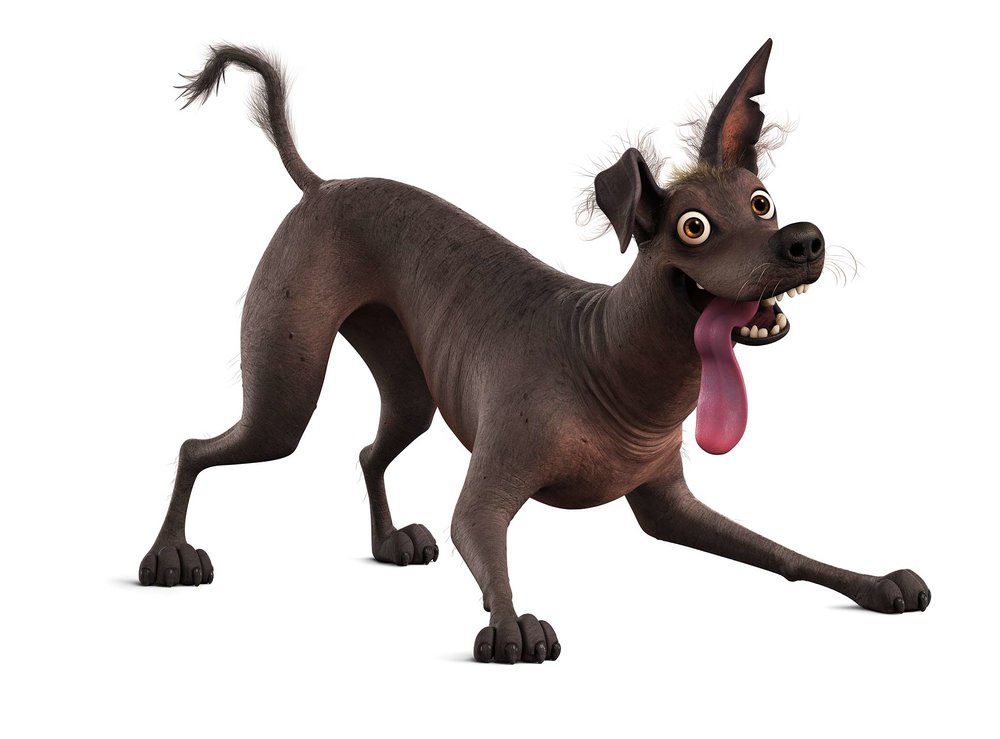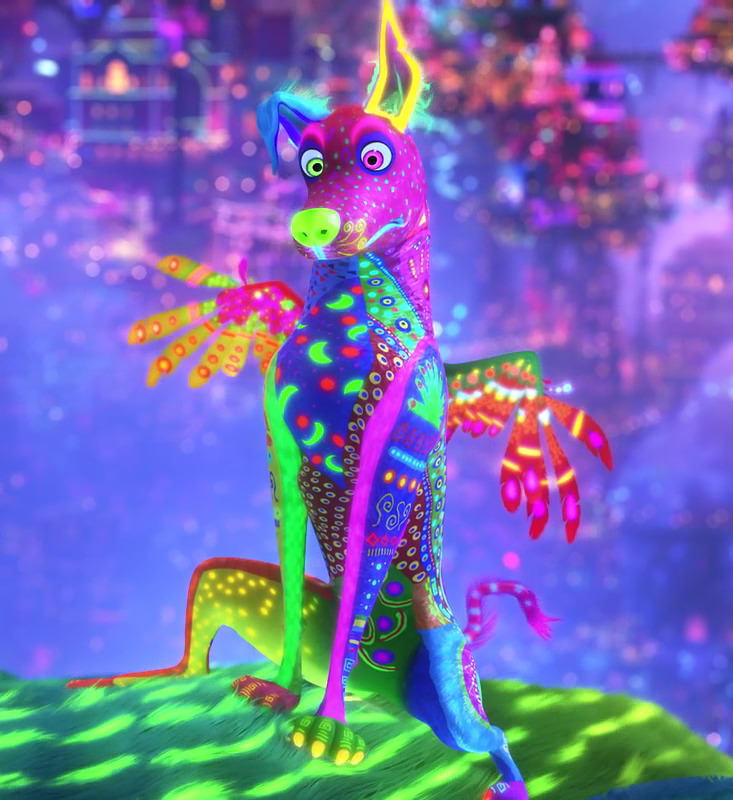Coco is a beautifully animated movie about family.
While plenty of live-action movies cover this same topic, there’s just something about Coco being stylized in such a way that it makes the experience better. Animated movies have a magic that just cannot be replicated in strictly real life, but it can draw upon real life. You see, movies like this are able to utilize both the fantasy of cartoon and grittiness of real life together to create a purposeful contrast that’s visually striking. For a better understanding, let’s take a closer look into specific design choices of the movie.
Coco uses artistic animation during the scene where Dante changes from his regular dog form to his spirit guide form. While Dante the dog is cartooned in proportion, the art of the animated movie gives his body a rough skin texture. Dante’s regular dog form has little to no fur, so you are able to see much of his skin, including moles and discolored patches. His muscle movements also stand out since his fur is so thin. The color palette as well, muddy browns and pinks, makes him look like a scrappy street dog, which he is supposed to be. This realistic depiction, using a natural, realistic but bland color palette for the stray, is then contrasted when Dante turns into his spirit guide form.

Dante’s spirit guide form is diverse in color palette, using bright neons against a dark body background. This is completely different from his previous form, and adds a whimsical sense of beauty to the overall art of the film. This new color palette is popping, striking even against the navy sky and orange lanterns in the land of the dead. On Dante are also free-flowing patterns which move with the character, and making up each stripe of vibrant color is obvious fur, giving this new coat a nice soft texture. No longer is he a realistic stray, but a creature of fantasy that is meant to capture the audience’s imaginations.

Live action dogs do not turn neon colors and sprout humorously small wings, they are bound by the laws of our universe. In animation, however, the possible is limitless, and artists create whatever they wish by their own rules. Even if the movie was made as live action, and CGI was used to color Dante’s new body, the vibrant colors would have still been animated in with his movements or edited in some other similar way. Through the magic of animation, we can see Dante transform into rainbow patterns, a type of magic that just can’t be captured in real life alone.
Comments
Post a Comment